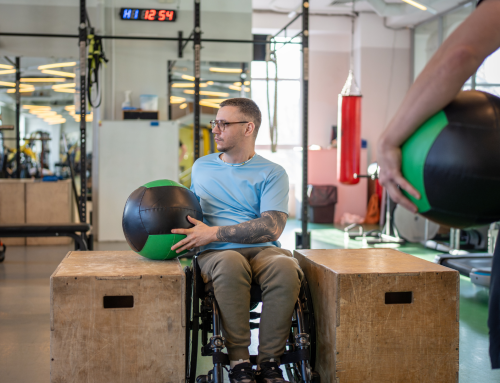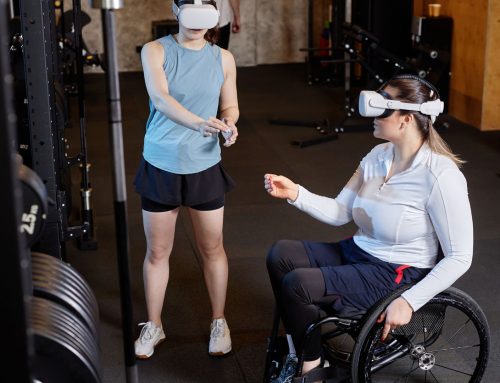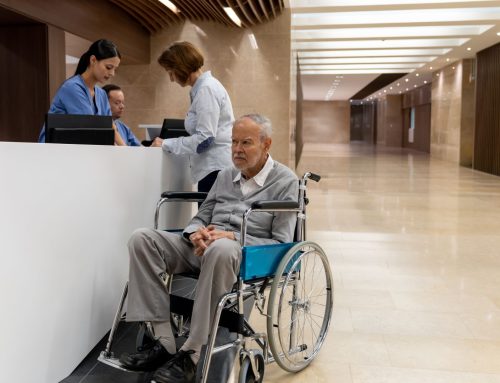Brain tumours affect the control centre for thought, emotion and movement. Hence, a brain tumour can have significant consequences on one’s physical and cognitive abilities, and most importantly on quality of life.
Brain tumour treatment can be a multifaceted process, tailored to the individual’s needs based on factors like the tumour’s location, size, and any resulting neurological deficits. In this intricate journey, healthcare professionals play pivotal roles in guiding patients through the physical and emotional rigors of treatment.
In this blog, we will look at the general classification of brain tumours, how they are treated and the role of physiotherapists and occupational therapists at different stages of the disease.
Table of Contents:
- Brain tumour classification
- Brain tumour treatment
- Brain tumour surgery
- Chemotherapy for brain tumours
- Radiation therapy for brain tumours
- Brain tumour rehabilitation
Brain Tumour Classification
Brain tumours may be benign or malignant, primary or metastatic and originate in varying tissues of the central nervous system. It is estimated that 27 Canadians are diagnosed with a brain tumour each day. There are currently 55,000 Canadians living with a brain tumour.[i]
Benign brain tumours are non-cancerous but may still be serious and require treatment depending on the location of the tumour.
Malignant tumours are cancerous with cells that grow uncontrollably.
Primary tumours originate in the brain while metastatic brain tumours originate as cancer elsewhere in the body and then spread to the brain.
With over 120 types of brain tumours, further and extensive classification can be divided based on histology, pathophysiology and molecular genetics. Classification is based on the type of tumour, whether it is fast or slow growing, and how much it has spread into surrounding tissues.
You may also enjoy reading: Cancer and Exercise: Benefits, Precautions, Guidelines
Brain Tumour Treatment
Navigating the complex terrain of brain tumour treatment requires a multifaceted approach, encompassing surgical intervention, rehabilitation, and adjuvant therapies like chemotherapy and radiation.
Following surgery, rehabilitation efforts spearheaded by physiotherapists and occupational therapists aim to restore function and independence. Meanwhile, the challenges posed by chemotherapy and radiation underscore the need for comprehensive support to manage side effects and promote overall well-being.
You may also enjoy reading: Physiotherapy for Breast Cancer Treatment Side Effects
Brain Tumour Surgery
One of the first lines of treatment after a brain tumour diagnosis is surgery. Surgery is done to take out as much of the tumour as possible as well as to perform further testing on the make-up of the tumour.
Physiotherapy begins shortly after surgery which involves early mobilization, strengthening and improving independence to get patients back home. Occupational therapy focuses on relearning daily tasks such as dressing, eating and bathing. Physiotherapists and occupational therapists will work closely together to provide and recommend equipment based on the patient’s needs to ensure safety in the home.
Therapy will often vary depending on the impairments of the client. Rehabilitation can also include speech therapy, social work, and dieticians. Precaution should be taken during this time to minimize any rise in intracranial pressure, through activities such as lifting, heavy exertion and holding one’s breath with movements.
You may also enjoy reading: Physiotherapy in Multiple Myeloma Treatment
Chemotherapy for Brain Tumours
Depending on the type and location of the tumour, often chemotherapy and radiation are recommended for treatment. Chemotherapy involves the use of drugs circulated through the bloodstream to target cancer cells. This treatment is typically given after surgery or if there is a reoccurrence of the tumour. These drugs are given in cycles as the body requires time to recover, taking the medication for days, then having a few weeks to recover.
It is important for physiotherapists to be aware of the many side effects of chemotherapy treatment. Although each person can react differently to treatment side effects can include:
- Nausea
- Lower immunity
- Fatigue
- Loss of appetite
- Headaches
- Difficulty sleeping
- Muscle weakness
Due to the large impact of the side effects of treatment, patients often avoid activity leading to further deconditioning and emotional effects such as depression and anxiety. There is increasing evidence on the connection between physical activity, psychological wellbeing and management of treatment side effects.[ii] Large scale reviews have demonstrated and recommended:
- People living with cancer can safely engage in moderate amounts of exercise while on active treatment or after completion of treatment.
- Moderate amounts of exercise are recommended to improve the quality of life, and muscular and aerobic fitness, of people living with cancer.[iii]
Often during this period, physiotherapists work with clients to develop a tailored, goal-based activity program that best meets the needs of the individual, ranging from chair-based yoga programs to walking and biking programs. A comprehensive assessment should be completed to start and progress clients slowly during their tailored exercise program.
Occupational therapists can help to address upper extremity weakness, as well as cognitive difficulties that can present themselves during this period. Cognitive challenges can include memory issues, difficulty concentrating and decreased motivation. Therapists can provide exercises, strategies and education to patients and families to help cope with these changes.
Radiation Therapy for Brain Tumours
Radiation therapy uses high powered beams of energy to kill cancer cells. This is typically done over several weeks and can also be done in conjunction with chemotherapy. Side effects of radiation can include:
- Fatigue
- Hair loss
- Skin changes
- Swelling (edema)
- Nausea
- Sexual effects (reduced desire)
- Blood clots
- Cognitive changes
The serious side effect of brain swelling often leads to many brain tumour clients being prescribed the steroid, dexamethasone. While this drug is highly effective in reducing edema induced symptoms such as headaches and weakness, the steroid also possesses significant side effects of its own. Some of these side effects include weight gain, insomnia, mood changes and dizziness.
Physiotherapists and occupational therapists can play a role during radiation treatment by:
- Aiding in pain management and inflammation
- Helping in range of motion and flexibility
- Maximizing mobility
- Education around fatigue management, energy conservation
Brain Tumour Rehabilitation
Brain tumour rehabilitation is a comprehensive and interdisciplinary process aimed at optimizing the physical, cognitive, emotional, and social functioning of individuals affected by brain tumours. This multifaceted approach encompasses various rehabilitation strategies tailored to the unique needs and challenges of each patient.
Therapy plays a crucial role in brain tumour rehabilitation by focusing on restoring independence in activities of daily living, improving cognitive skills, addressing sensory and motor impairments, facilitating community reintegration, and providing emotional support.
Through a combination of physical, occupational, speech, and psychological therapies, along with medical management and social support, brain tumour rehabilitation endeavors to enhance quality of life, promote functional independence, and facilitate the fullest possible recovery for patients and their families.
At Propel Physiotherapy, our therapists are experienced at managing and treating the neurological disorders and the impairments that go along with this disease. Therapists provide a comprehensive assessment to help tailor an individualized treatment plan that is right for you.
Contact us today to see how we can help you achieve your goals.
References
[i] Facts About Brain Tumours, Brain Tumour Foundation of Canada
[ii] Zyzniewska-Banaszak E, Kucharska-Mazur J, Mazur A. Physiotherapy and Physical Activity as Factors Improving the Psychological State of Patients With Cancer. Front Psychiatry. 2021 Nov 22;12:772694. doi: 10.3389/fpsyt.2021.772694. PMID: 34880794; PMCID: PMC8645643.
[iii] Segal R, Zwaal C, Green E, Tomasone JR, Loblaw A, Petrella T; Exercise for People with Cancer Guideline Development Group. Exercise for people with cancer: a clinical practice guideline. Curr Oncol. 2017 Feb;24(1):40-46. doi: 10.3747/co.24.3376. Epub 2017 Feb 27. PMID: 28270724; PMCID: PMC5330628.
Written by

















